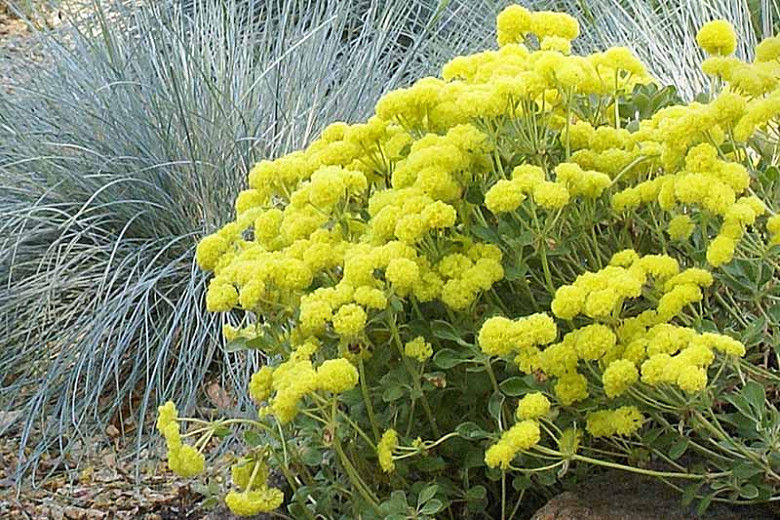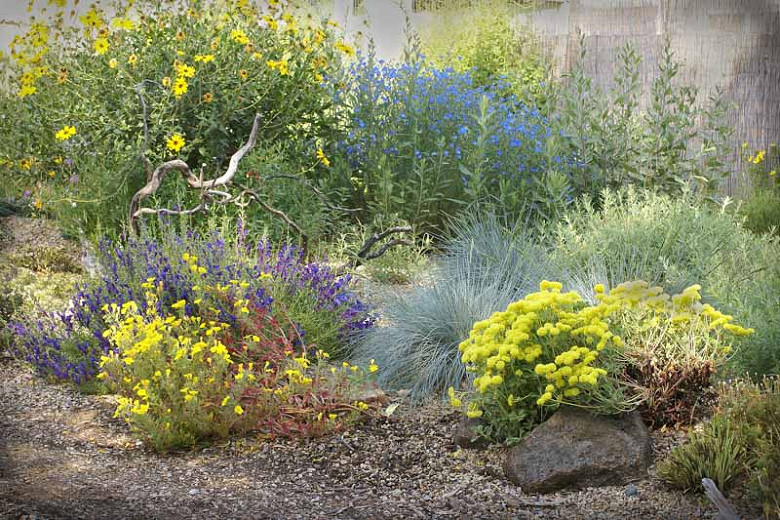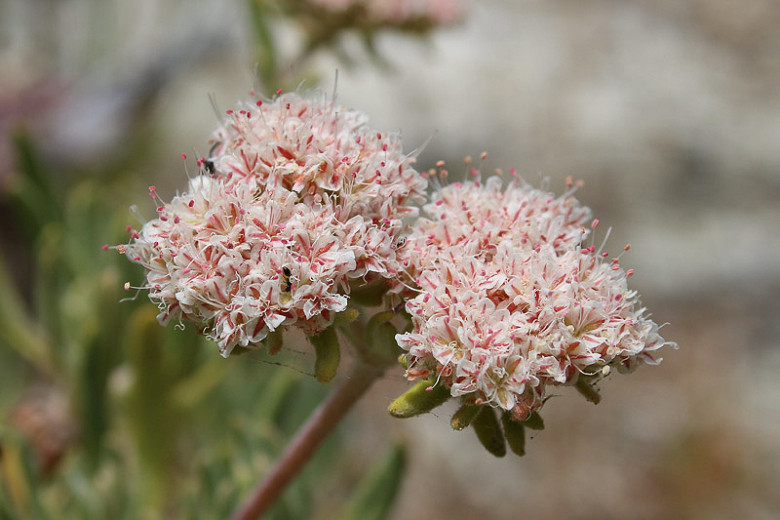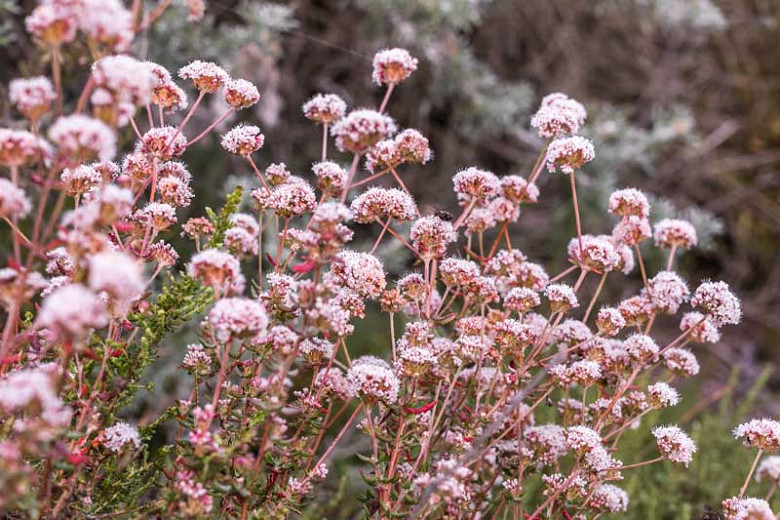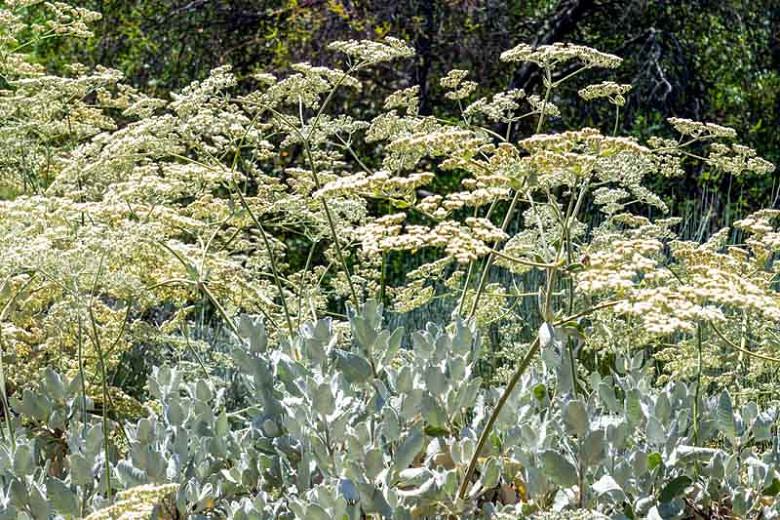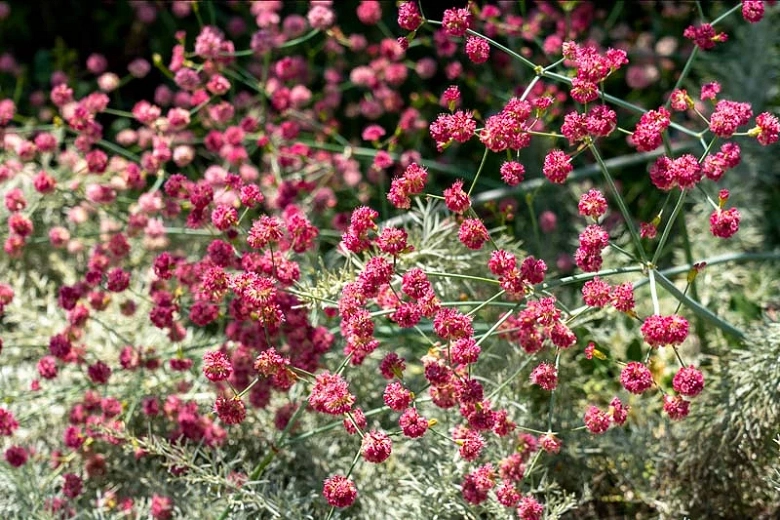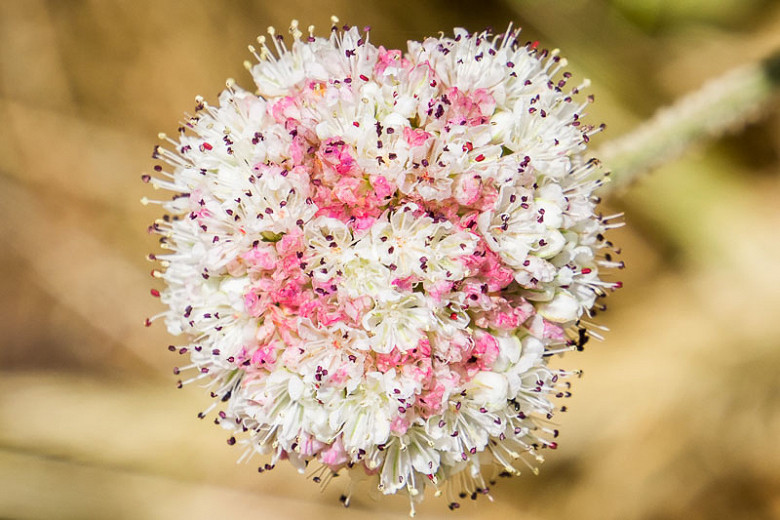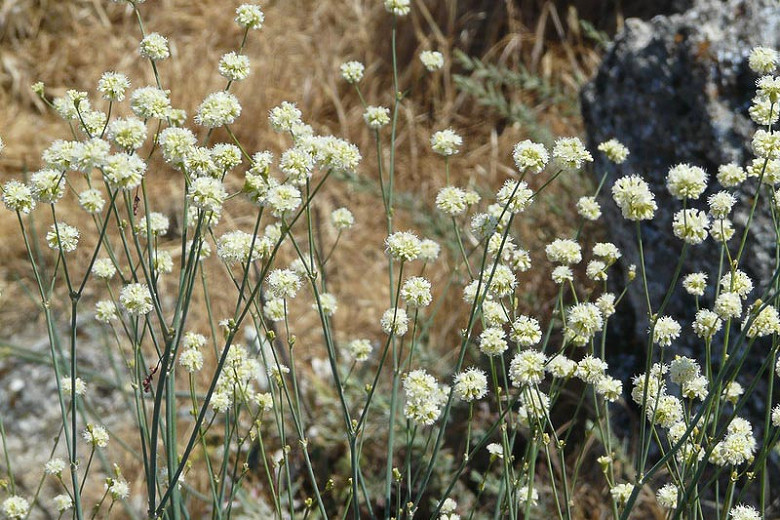Eriogonum umbellatum (Sulphur Buckwheat)
A very bright addition to hot, dry gardens, Eriogonum umbellatum (Sulphur Buckwheat) is an evergreen to semi-evergreen perennial forming a broad mat of woody stems set with small, vertical, spatula-shaped leaves, 1 in. long (2.5 cm), that are green above, white and felted beneath. The foliage warms us to red tones in the fall, extending the season of interest of the plant. Opening from red-tinted buds, brilliant sulfur yellow flowers bloom for months from early summer to fall. They are held in dense, frilly clusters, 4 in. wide (10 cm), atop leafless flowering stalks. They attract many butterflies and bees. The blossoms dry to a pretty red rust color and can be used in dried arrangements. The seeds develop into valuable wildlife food and attract birds. Native to dry rocky soils in rocky forests, foothills, mountain slopes, and mountain ridges of southwestern North America, Sulphur Buckwheat is an exceedingly variable species with many varieties and subspecies. Tough and easy to grow, Sulphur Buckwheat tolerates very dry conditions and is a great choice for desert gardens or water-wise gardens.
- Grows up to 6-12 in. tall (15-30 cm) and 12-36 in. wide (30-90 cm).
- Performs best in full sun, in dry to medium, well-drained soils. Needs low amounts of summer irrigation. This plant tolerates drought, poor soils, rocky soils, and high heat.
- Great for banks and slopes, rock gardens, butterfly gardens, or as a groundcover.
- Generally pest and disease free. Keep an eye out for rust and powdery mildew.
- Propagate by seed as it is very difficult to transplant or divide the long taproots of mature plants. No seed treatment is necessary, but a 3-month stratification may improve germination.
- Native to southwestern North America from southern British Columbia south to California, and eastward to Colorado, Wyoming, Montana, and New Mexico.
Requirements
| Hardiness | 4 – 8 |
|---|---|
| Climate Zones | 1, 1A, 1B, 2, 2A, 2B, 3, 3A, 3B, 4, 5, 6, 7, 8, 9, 10, 11, 12, 13, 14, 15, 16, 17, 18, 19, 20, 21, 22, 23, 24 |
| Plant Type | Perennials |
| Plant Family | Eriogonum – Buckwheat |
| Exposure | Full Sun |
| Season of Interest | Summer (Early,Mid,Late)Fall |
| Height | 6" – 1' (15cm – 30cm) |
| Spread | 1' – 3' (30cm – 90cm) |
| Spacing | 24″ – 36″ (60cm – 90cm) |
| Water Needs | Low |
| Maintenance | Low |
| Soil Type | Loam, Sand |
| Soil pH | Acid, Alkaline, Neutral |
| Soil Drainage | Well-Drained |
| Characteristics | Dried Arrangements, Showy, Evergreen, Semi-Evergreen |
| Native Plants | United States, California, Pacific Northwest, Idaho, Oregon, Washington, Rocky Mountains, Colorado, Montana, Utah, Wyoming, Southwest, Nevada, Arizona, New Mexico |
| Tolerance | Drought |
| Attracts | Bees, Birds, Butterflies |
| Garden Uses | Banks and Slopes, Beds and Borders, Ground Covers |
| Garden Styles | Gravel and Rock Garden, Informal and Cottage, Mediterranean Garden |
